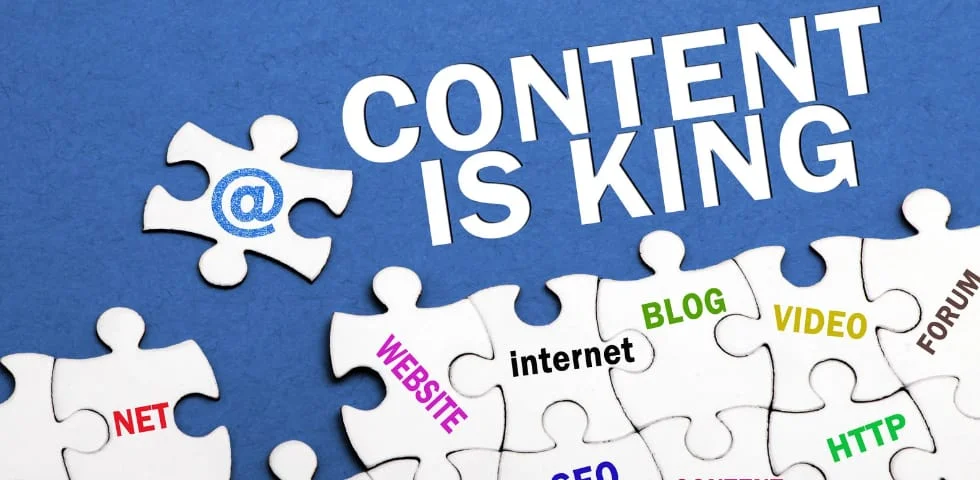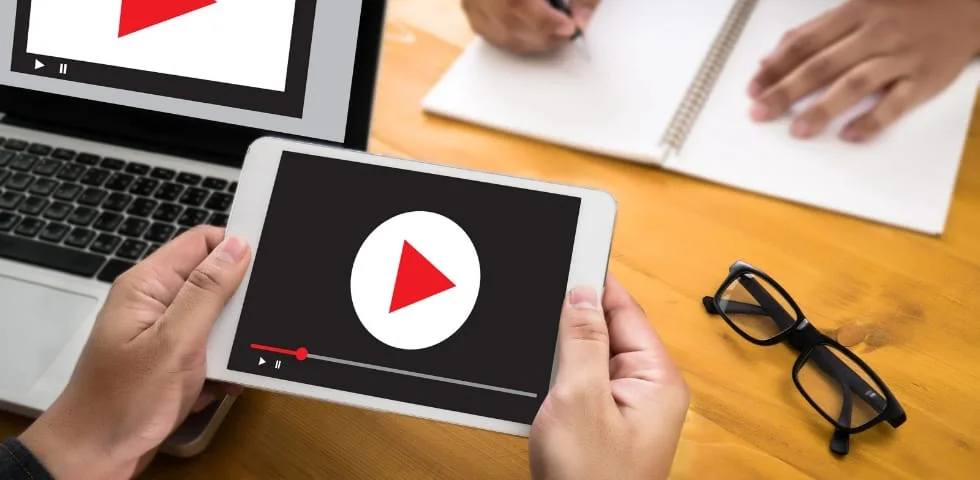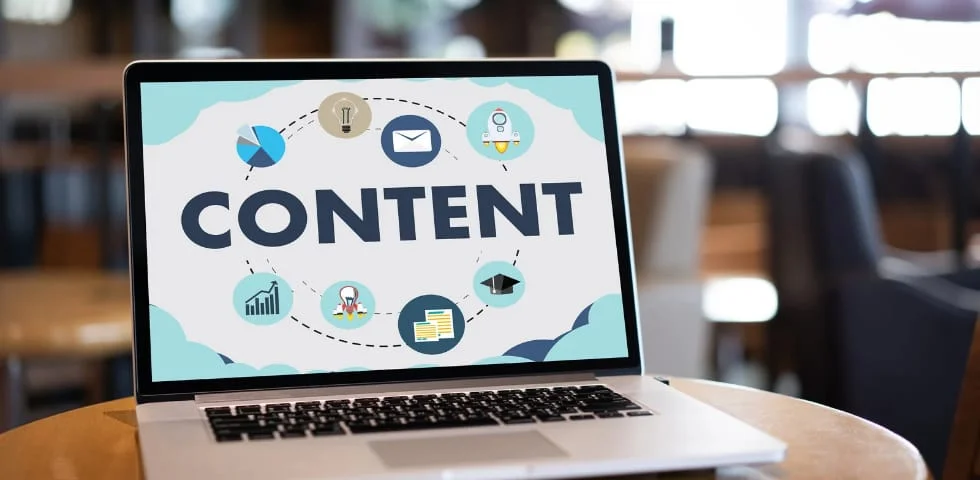Introduction
In the ever-evolving landscape of digital marketing, creating exceptional content is only half the battle. The real challenge lies in ensuring that your content reaches the right audience at the right time. This is where content distribution comes into play. Imagine spending hours crafting a masterpiece only for it to gather dust in the corners of the internet. Frustrating, isn’t it?
Content distribution hack is the strategic process of sharing, promoting, and amplifying content across various platforms and channels to maximize its reach and impact. In today’s digital age, where consumers are bombarded with information, an effective distribution strategy is essential. It ensures that your message cuts through the noise and reaches your target audience, whether they’re scrolling through social media, checking their email, or browsing their favorite websites.
This blog will delve into the most effective methods for distributing content across multiple platforms and channels. Whether you’re a seasoned digital marketer or just starting, these insights will help you optimize your content distribution strategy, boost engagement, and ultimately drive more conversions.
Understanding Content Distribution
Content distribution is more than just posting a link on social media or sending out an email blast. It’s a comprehensive strategy that involves carefully selecting the right platforms, tailoring content for each channel, and consistently engaging with your audience. The goal is to ensure your content not only reaches your audience but also resonates with them, driving action and fostering loyalty.

The Importance of Content Distribution
Without a well-thought-out distribution strategy, even the best content can go unnoticed. In a digital environment where attention spans are short and competition is fierce, your content needs to be seen by the right people to achieve its intended impact. Effective content distribution helps you:
- Maximize Reach: By using multiple platforms, you can reach a broader audience, including those who may not be actively searching for your content.
- Increase Engagement: Tailoring content for specific channels ensures it’s more relevant and engaging for each audience segment.
- Drive Traffic and Conversions: The more touchpoints your audience has with your content, the higher the chances of driving them to take desired actions, such as making a purchase or subscribing to your newsletter.
Content distribution isn’t a one-size-fits-all approach. It requires understanding the nuances of each platform and how your audience interacts with content on those platforms.
Top Platforms for Content Distribution
Choosing the right platforms for content distribution is crucial to the success of your strategy. Different platforms cater to different types of content and audiences, so it’s essential to understand where your target audience spends their time and how they consume information. Below are some of the most effective platforms for content distribution:

1. Social Media Platforms
Social media remains one of the most powerful tools for content distribution. Platforms like Facebook, Twitter, LinkedIn, Instagram, and TikTok each have unique strengths and cater to different demographics.
- Facebook: Ideal for a broad audience, particularly for sharing blog posts, articles, and strategy video content. Facebook’s advertising tools also allow for targeted distribution based on interests and behaviors.
- Twitter: Best for real-time updates, short-form content, and engaging with industry trends. It’s particularly effective for sharing news articles and blog posts.
- LinkedIn: The go-to platform for B2B content distribution. LinkedIn is perfect for sharing industry insights, whitepapers, case studies, and professional articles.
- Instagram and TikTok: Visual content is king on these platforms. Use them for distributing infographics, short videos, and engaging visual stories.
2. Email Newsletters
Email remains one of the most direct ways to distribute content to a targeted audience. Building a strong email list allows you to regularly deliver content directly to your subscribers’ inboxes, ensuring higher visibility and engagement. Email newsletters can include blog posts, product updates, and exclusive content that nurtures your relationship with your audience.
3. Content Syndication Networks
Content syndication involves publishing your content on third-party websites, which can significantly expand your reach. Platforms like Medium, Quora, and industry-specific forums allow you to reach new audiences who may not visit your website directly.
- Medium: A popular platform for republishing blog posts and articles, helping to reach a broader audience.
- Quora: Engage with users by answering questions related to your content. This not only drives traffic to your site but also establishes your authority in the field.
4. Video Platforms
Video content is highly engaging and can be distributed across multiple platforms to maximize reach.
- YouTube: The second-largest search engine, ideal for distributing educational videos, tutorials, and product demonstrations.
- Vimeo: A great alternative to YouTube, especially for businesses looking for more customization and control over their video content.
5. Blogs and Websites
Your own blog or website should be the central hub for your content. From there, you can distribute your content across other platforms. SEO optimization is key here to ensure your content is discoverable by search engines.
Optimizing Content for Different Channels
While it’s essential to distribute content across multiple platforms, it’s equally important to tailor that content to fit each channel. What works on one platform may not resonate on another, so optimizing your content is key to maximizing its impact. Here’s how to adapt your content for different channels:

1. Social Media
Each social media platform has its own style and audience preferences. To optimize your content:
- Facebook: Focus on creating engaging headlines, compelling visuals, and using Facebook’s native features like polls or events. Longer posts can perform well, especially when they tell a story or provide valuable information. Include a clear call to action (CTA) to encourage shares and comments.
- Twitter: Brevity is key. Use concise, impactful language, and include relevant hashtags to increase visibility. Twitter is also ideal for sharing quotes, statistics, or quick insights that link back to longer content.
- LinkedIn: Since LinkedIn is a professional network, your content should be more formal and industry-focused. Long-form articles, professional advice, and case studies do well here. Use LinkedIn’s publishing platform to share detailed posts directly on the site.
- Instagram and TikTok: Visual storytelling is crucial. High-quality images, infographics, and short videos should be the focus. Use Instagram Stories or TikTok’s short video format to engage your audience quickly and effectively. Don’t forget to use platform-specific hashtags to increase discoverability.
2. Email Newsletters
Personalization is critical when optimizing content for email newsletters. Use segmentation to tailor content to specific audience segments. For instance:
- Subject Lines: Craft attention-grabbing subject lines that encourage opens. They should be clear, concise, and hint at the value inside the email.
- Content Format: Keep the email copy concise and to the point. Use bullet points, clear headings, and visuals to break up text. Include direct links to your full content pieces and use strong CTAs to guide readers.
3. Content Syndication Networks
When syndicating content, consider the following optimizations:
- Medium: When republishing on Medium, tailor the introduction to appeal to Medium’s audience. Medium readers appreciate personal stories and insights, so include these elements where possible. Use tags effectively to increase visibility within Medium’s search algorithms.
- Quora: When sharing content on Quora, frame your posts as answers to common questions in your niche. Provide valuable, succinct answers that link back to more detailed content on your blog or website.
4. Video Platforms
To optimize video content:
- YouTube: Use engaging thumbnails, descriptive titles, and detailed video descriptions with relevant keywords. Ensure your video content is engaging from the start, as YouTube’s algorithm favors content that keeps viewers watching.
- Vimeo: Focus on quality over quantity. Vimeo’s audience often appreciates high-quality, creative content. Make sure your videos are professionally edited and include a clear narrative.
5. Blogs and Websites
For your own blog or website:
- SEO Optimization: Use relevant keywords, meta descriptions, and alt tags for images to improve search engine visibility. Internal linking to related posts can also keep readers engaged longer.
- Content Structure: Use clear headings, subheadings, and bullet points to make your content scannable. This improves user experience and can boost your SEO ranking.
By customizing your content for each platform, you not only improve engagement but also ensure that your content resonates with the unique audiences on each channel.
Using Analytics to Refine Distribution
Data-driven decisions are at the core of successful content distribution strategies. By leveraging analytics, you can gain insights into how your content is performing across various platforms, identify what’s working, and make informed adjustments to optimize your strategy. Here’s how to effectively use analytics to refine your content distribution:

1. Tracking Key Metrics
Each platform offers its own set of analytics tools, but there are key metrics you should track across all channels:
- Reach and Impressions: Measure how many people are seeing your content. This helps you understand the potential audience size on each platform.
- Engagement: Track likes, shares, comments, and clicks. High engagement rates typically indicate that your content is resonating with the audience.
- Click-Through Rate (CTR): This metric shows how often people click on your links after seeing your content. A low CTR might suggest that your CTA isn’t compelling enough or that the content isn’t enticing.
- Conversion Rate: Ultimately, you want to know how effective your content is at driving actions, whether it’s subscribing to a newsletter, making a purchase, or filling out a form. This is a critical metric for evaluating ROI.
- Bounce Rate: If people are leaving your site quickly after clicking through from distributed content, this could indicate a mismatch between what they expected and what they found, signaling a need to align content more closely with audience expectations.
2. Platform-Specific Analytics
Different platforms offer unique insights:
- Social Media: Tools like Facebook Insights, Twitter Analytics, and LinkedIn Analytics provide data on audience demographics, post-performance, and peak engagement times. Use this data to refine when and what you post.
- Google Analytics: For content shared via your website or blog, Google Analytics can track user behavior, source of traffic, and conversion paths. It’s an invaluable tool for understanding how your distributed content drives traffic and conversions.
- Email Marketing Platforms: Platforms like Mailchimp or HubSpot offer detailed analytics on open rates, click rates, and subscriber behavior. Use this data to tweak your email content and improve future campaigns.
3. A/B Testing
A/B testing involves creating two versions of a piece of content and distributing them to see which performs better. This can be done with:
- Headlines: Test different headlines to see which one drives more clicks.
- Images: Experiment with different visuals to find out which one garners more engagement.
- CTAs: Try different call-to-action phrases to see which one leads to higher conversions.
Regular A/B testing helps you continuously improve your content and distribution tactics based on real-world data.
4. Adjusting Your Strategy Based on Data
The insights gained from analytics should inform adjustments to your content distribution strategy. For example:
- Platform Focus: If analytics show that one platform significantly outperforms others in terms of engagement or conversions, consider focusing more effort on that platform.
- Content Type: If certain types of content (e.g., videos, infographics) are performing better, you might want to produce more of that content and distribute it more widely.
- Audience Segmentation: Analytics might reveal that certain audience segments are more responsive to your content. Use this information to tailor future content to those segments more closely.
Refining your content distribution strategy through the regular use of analytics ensures that you’re not just casting a wide net, but rather strategically reaching and engaging the right audience in the most effective ways.
Tools and Resources for Content Distribution
Leveraging the right tools can significantly streamline your content distribution process, helping you to automate tasks, track performance, and optimize your strategy for better results. Below are some of the most effective tools and resources for distributing content across multiple platforms and channels:

1. Social Media Management Tools
Managing multiple social media accounts and distributing content across them can be time-consuming. Social media management tools simplify this process by allowing you to schedule posts, monitor engagement, and analyze performance from a single dashboard.
- Hootsuite: One of the most popular social media management tools, Hootsuite allows you to schedule posts across multiple platforms, track social media mentions, and analyze engagement metrics. Its user-friendly interface makes it easy to manage large volumes of content.
- Buffer: Buffer is known for its simplicity and efficiency. It lets you schedule posts, track the performance of your content, and manage all your social media accounts from one place. Buffer’s analytics tools also provide insights on the best times to post.
- Sprout Social: This tool offers robust features for scheduling, publishing, and reporting on social media content. Sprout Social’s audience analytics can help you better understand your followers and tailor your content to increase engagement.
2. Email Marketing Platforms
Email remains a powerful channel for content distribution, and using the right tools can help you maximize its effectiveness.
- Mailchimp: A leading email marketing platform, Mailchimp offers features for designing email newsletters, automating email campaigns, and tracking performance metrics. It also integrates with various other platforms, making it easier to manage your content distribution efforts.
- Constant Contact: This tool is particularly useful for small businesses. It offers email templates, automation features, and detailed analytics to help you optimize your email marketing campaigns.
- ConvertKit: Designed with creators in mind, ConvertKit makes it easy to build and segment email lists, send personalized emails, and automate content distribution to your audience.
3. Content Syndication Networks
Content syndication can help you reach new audiences by republishing your content on popular platforms.
- Outbrain: Outbrain is a content discovery platform that helps you distribute your content on high-traffic sites, ensuring it reaches a broader audience. It’s ideal for driving traffic to your blog or website.
- Taboola: Similar to Outbrain, Taboola helps you promote your content across a network of publishers, increasing visibility and driving more traffic to your site.
- Zemanta: This tool connects your content to top publishers and niche websites, helping to ensure it reaches the right audience. Zemanta also offers real-time bidding to optimize your content distribution efforts.
4. SEO Tools
Optimizing your content for search engines is critical for ensuring it’s discoverable by your target audience.
- Yoast SEO: A popular WordPress plugin, Yoast SEO helps you optimize your content for search engines by analyzing your keywords, meta descriptions, and readability.
- Ahrefs: Ahrefs is a comprehensive SEO tool that provides keyword research, backlink analysis, and content gap analysis. It’s a powerful resource for improving your content’s visibility in search engine results.
- SEMrush: This tool offers a range of features for keyword research, competitor analysis, and content optimization. SEMrush can help you identify opportunities to improve your content’s search engine rankings.
5. Analytics and Reporting Tools
To measure the effectiveness of your content distribution strategy, you’ll need robust analytics tools.
- Google Analytics: A must-have for tracking website traffic, user behavior, and conversion rates. Google Analytics provides detailed insights into how your content is performing and where your traffic is coming from.
- HubSpot: HubSpot offers an all-in-one marketing platform that includes powerful analytics tools. You can track how your content performs across different channels and use the insights to refine your strategy.
- KISSmetrics: This tool focuses on customer engagement and retention, offering detailed analytics on how users interact with your content. It’s particularly useful for understanding the long-term impact of your content distribution efforts.
By incorporating these tools into your content distribution strategy, you can automate processes, gain valuable insights, and ultimately improve the effectiveness of your efforts across multiple platforms and channels.
Content Repurposing and Conclusion

1. Content Repurposing
One of the most efficient ways to maximize the reach and lifespan of your content is through repurposing. Repurposing involves taking a single piece of content and adapting it into different formats for distribution across various platforms. This strategy not only saves time and resources but also helps you reach different audience segments who may prefer different content formats.
Here’s how you can repurpose your content:
- Blog Posts to Infographics: Convert a detailed blog post into an infographic that visually presents the key points. Infographics are highly shareable on platforms like Pinterest and Instagram, and they can drive traffic back to the original blog post.
- Webinars to Blog Posts: If you’ve hosted a webinar, transcribe the content and turn it into a comprehensive blog post or a series of posts. You can also create shorter social media snippets or quotes from the webinar to promote the full content.
- Podcasts to Articles: If you have a podcast, consider turning each episode into an article. This gives your audience the option to consume the content in a written format and can also improve your SEO.
- Videos to Social Media Clips: Take a longer video and edit it into shorter clips that can be shared on social media. These clips can serve as teasers that link back to the full video on YouTube or your website.
- Ebooks to Blog Series: Break down an ebook into a series of blog posts, each focusing on a specific chapter or topic. This approach allows you to keep your blog content fresh while promoting the full ebook.
Repurposing content ensures that your valuable insights and information continue to generate engagement long after the original content was created.
Conclusion
In the fast-paced world of digital marketing, distributing content effectively across multiple platforms and channels is key to maximizing its impact. By understanding the unique strengths of each platform, optimizing content for different audiences, and using data-driven insights to refine your strategy, you can significantly enhance your content’s reach and effectiveness.
Incorporating the right tools and resources can streamline your efforts, allowing you to focus on creating high-quality content while automating and optimizing the distribution process. Furthermore, by repurposing content, you can extend its lifespan and continue to engage your audience in new and innovative ways.
Remember, content distribution is not just about getting your message out there; it’s about ensuring that your message resonates with the right people, at the right time, on the right platform. By following these strategies, you can ensure your content reaches its full potential, driving engagement, traffic, and conversions for your brand.













